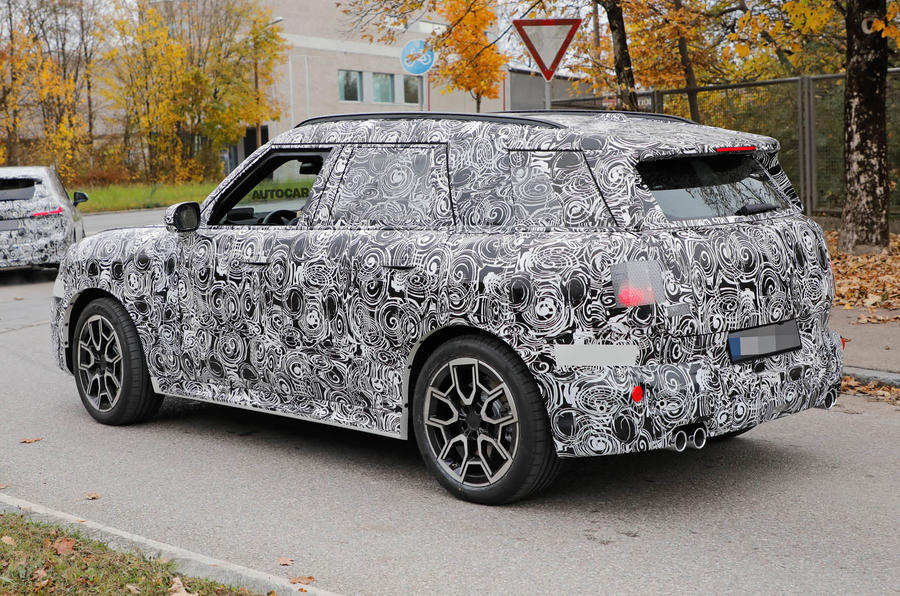The Countryman will be produced at BMW Group’s plant in Leipzig
Electric and petrol options for next-gen Countryman; to be produced at BMW’s Leipzig plant
The forthcoming second-generation Mini Countryman will begin production at BMW Group’s plant in Leipzig this year, bearing a heavy redesign and larger proportions over the outgoing car.
The Countryman will be the first Mini produced entirely in Germany at what BMW calls “one of the most modern and sustainable automotive factories in the world”, and will enter the highly-competitive mid-sized crossover segment with a choice of combustion and electric power.
It shares its FAAR front-driven architecture with the BMW 2 Series Active Tourer, 2 Series Gran Coupé and the new BMW X1 crossover, and be built alongside them in Leipzig, making it the first time BMW and Mini products are manufactured together.
This second-generation car will ditch plug-in hybrid power for petrol and pure-electric drivetrain options, but a diesel version will be offered outside the UK market.
The electric car is expected to use a similar drivetrain set-up to its BMW twin, which comes with a motor mounted on each axle for 4WD, 309bhp and 0-62mph in 5.7sec. If replicated, this would make the Mini Countryman Electric the brand’s most powerful ever car.
The pure-combustion car will offer 48V mild-hybrid technology with either a 168bhp 1.5-litre three-cylinder or 215bhp 2.0-litre four-cylinder turbo petrol engines.

Late in 2022, Autocar got its first look at a camoflagued range-topper. The test mule gave itself away with a beefy quad-exit exhaust, sports alloys and prominent rear spoiler. While the JCW badge is normally given to Mini’s performance models, it is not yet know whether this, the most powerful Countryman, will wear it. The brand has, however confirmed its intentions to carry the nameplate through to its electrified product range.
Importantly, however, FAAR will not be used for Mini’s new three-door hatchback, the electric version of which will be built in China as part of a new joint venture between BMW and Great Wall Motors and use a platform supplied by the latter, while the petrol car will be an evolution over the current model and continue to be built in Oxford.
Crucially, the Countryman will be noticeably bigger than today’s car, with early estimates suggesting a 200mm increase in length to provide enhanced load capacity and leg room. Effectively, this increase will bump Mini’s crossover into a new segment, moving it away from rivals such as the Toyota CH-R and Nissan Juke, and lining it up against larger, more premium-focused cars like the Audi Q3 and Volvo XC40.
The Countryman’s tenure as Mini’s only SUV model is nearly up. It will be joined in dealerships shortly after launch by an all-new electric crossover model built in China by Great Wall Motors, as part of the ‘Spotlight’ joint venture between the two companies – previewed by the bold Aceman concept.
Source: Autocar